Spittoon | Reexamining and Rectifying the Term "渣斗"
(The following article is from Ye Yingting)
"In 2009, I had the opportunity to visit the excavation site of the Lü Family tomb in Lantian, Shaanxi, with friends from the Institute of Archaeology. Among the unearthed artifacts, one copper artifact in particular left a deep impression on me: a copper spittoon with a copper bowl attached to its top. Upon closer examination, I noticed remnants of leftover tea inside the spittoon, traces of tea flowing down its sides, and even a small cluster of dried tea leaves adhering to the bottom of the copper bowl. Based on these observations, I deduced that the copper spittoon and bowl likely served as tea utensils. The spittoon appeared to be designed to collect tea dregs, leading me to write an article titled 'Reexamining the Copper Spittoon' (initially composed as a casual essay, later developed into a scholarly examination). The first draft was completed in 2015, with some additional supplements added in the 2020 reissue, which can be found by searching this account. The topic resurfaced recently as the rapid spread of the Omicron variant prompted me to dedicate more time to indoor reading. While reviewing some related materials, I realized that my previous viewpoint might have been hasty. As the ancient saying goes, 'One can hear the Dao in the morning and die in the evening.' However, if we fail to correct the 'inadequacies' of our previous understandings, they will continue to be like a fishbone lodged in our throats."

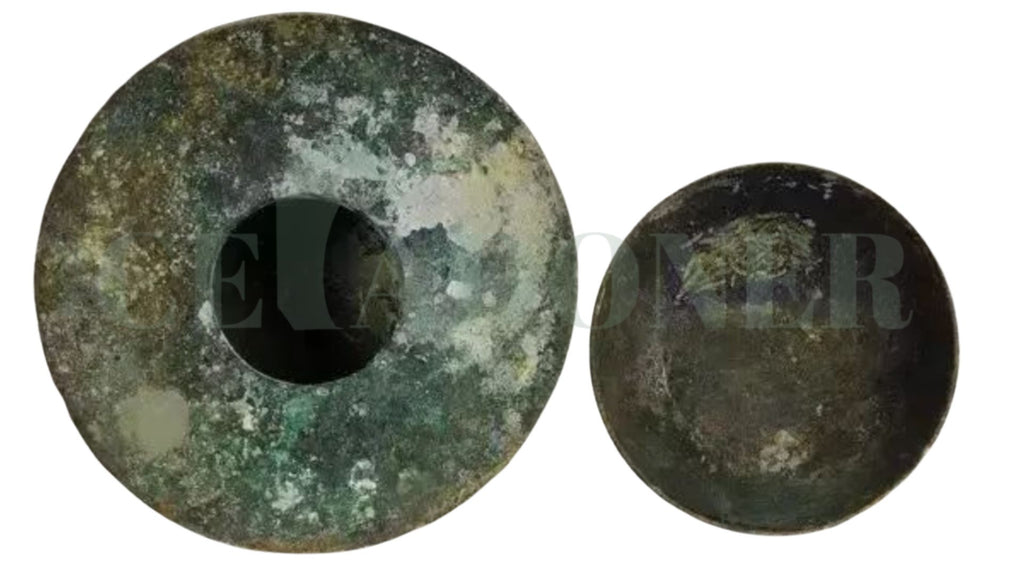
"A Pair of Copper Spittoons and Basins Unearthed from the Northern Song Dynasty Lü Family Tomb in Lantian, Shaanxi (Originally Gilded)"
"The nomenclature of such artifacts remains contentious to this day, with some designating them as 'spittoons' and others as 'slag buckets,' each term undoubtedly indicating distinct functions. In my previous writings, I leaned towards the latter interpretation. However, upon revisiting Song Dynasty literature and scrutinizing corroborating Song paintings, the term 'spittoon' appears to be more historically accurate. The copper 'slag buckets' and copper bowls unearthed from the Lü Family tomb are indeed 'spittoons' and 'basins.' Additionally, according to the book 'Lantian Lü Family Cemetery' published in 2018 by institutions including the Shaanxi Provincial Institute of Archaeology (published by Cultural Relics Press), another item accompanying these finds is a 'copper plate.' Both the spittoon and basin were found placed within this plate. This type of copper plate is likely what the Song people referred to as a 'silo drum' (sīluó)."
"The term 'silo drum' is explained in Song Dynasty texts such as Zhao Yanwei's 'Yunlu Manchao' (Volume Nine) and Cheng Dachang's 'Chengshi Yanfan Lu' (Volume One). Zhao Yanwei suggests that 'silo drum' refers to a washing basin, originating from military usage, where a drum-shaped container was used for both washing and sounding an alarm, similar to a 'diaodou' for blowing food during night watches, emphasizing its convenience. Cheng Dachang posits that 'silo drum' refers to a basin, its name originating from the Silla Kingdom (also known as Silla or Silo; 'sī' is the mispronunciation of the sound), a copper-producing region. It specifically refers to a copper basin (later generations used gold or silver), distinguishing it from the ancient Chinese clay basins."
(For those interested, you can look up the original texts to read. Attached below are screenshots of the original passages.)
"According to the 'Kangxi Dictionary' entry for the character '䤬':
䤬鑼 (pinyin: shā luó), a copper object... In the Song Dynasty records, 'silo drums' (厮鑼) were held before carriages. In the Yuan Dynasty records, it is written as 'water ladle and scoop drum' (水礶𨮭鑼). Records of Southern Song markets also mention 'wine vessel sa luó' (酒器沙鑼). This was likely a water basin, made of gold or silver, similar to today's copper basins. Sand, si (silo), and 𨮭 are all pronounced similarly. Some sources suggest that 䤬 may be pronounced as 'si' or '𨮭.' The object struck by messengers on horseback, resembling a small drum, is colloquially called a 'sieve drum' (篩鑼), which is the same as a 䤬鑼."
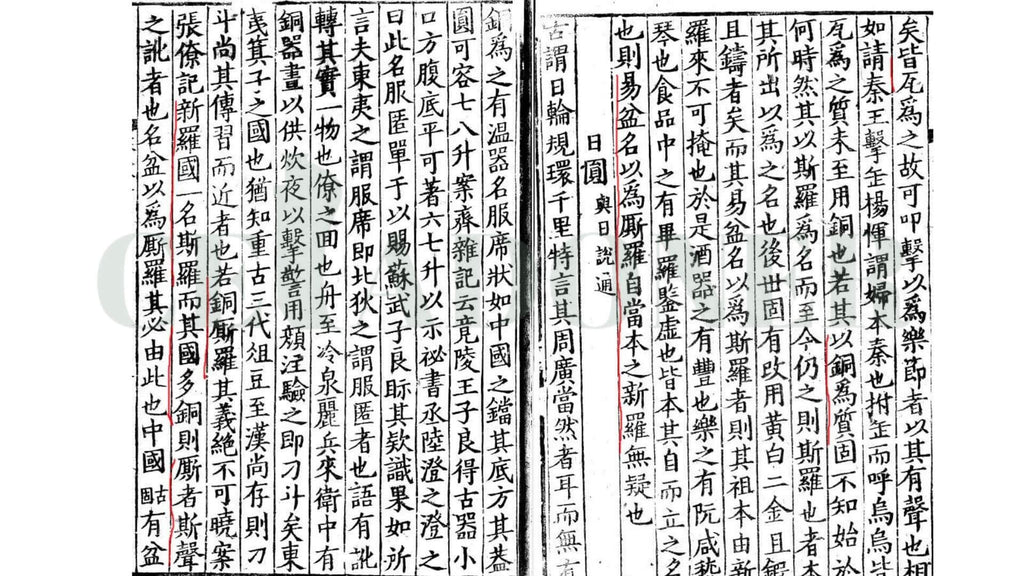
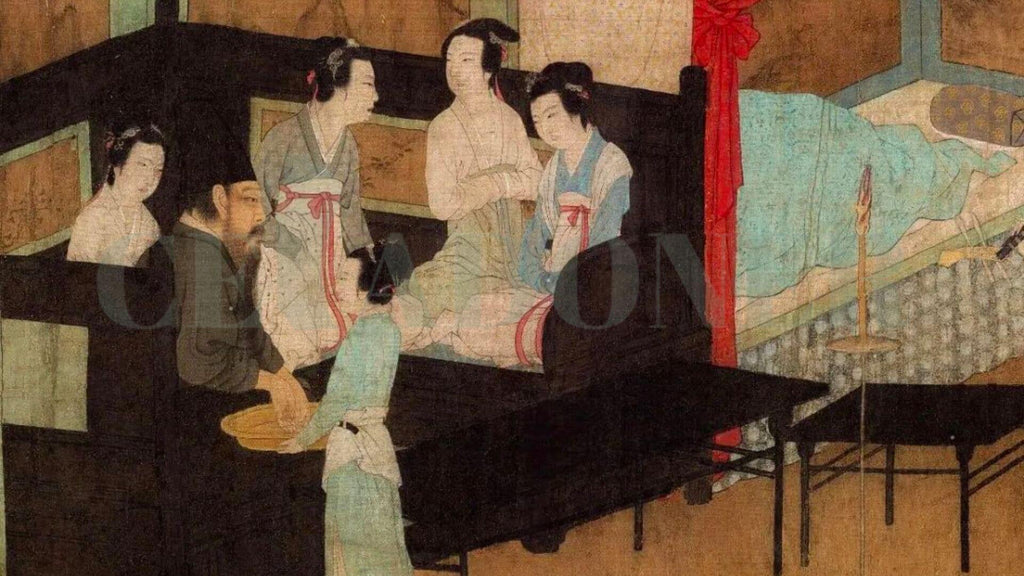
"Partial View of 'Han Xizai's Night Revels,' a Painting by Gu Hongzhong from the Five Dynasties Period"
The washbasin depicted in the painting bears a striking resemblance to the 'silo drum' seen in Song Dynasty artworks, indicating a possible trend that emerged during the Five Dynasties period.
During the Song, Liao, and Jin Dynasties, the combination of spittoons (唾盂) and basins (钵盂) formed a set, along with the 'silo drum' (厮锣), constituting a group of washing utensils. The 'silo drum' functioned in a manner similar to washing and purifying hands, the spittoon for rinsing the mouth, and the basin for collecting rinse water. These three items were considered precious possessions for royalty, high-ranking officials, and the upper echelons of society, used during their travels as 'golden and silver objects' (金银从物) of prestige. (Refer to Yang Zhishui's article "The Pair of Silo Drums and Spittoons, Basins: A Study of 'Golden and Silver Objects'").
The "Collected Drafts of the Court Rituals of the Song Dynasty" (《宋会要辑稿·礼六二》) records several instances of the bestowal of silo drums and spittoons:
- On the fourteenth day of the fifth month of the sixth year of Zhenghe era (approximately 1116 CE), the Grand Preceptor Cai Jing was granted golden and silver objects, including a silo drum, a pair of spittoons, and basins.
- On the twenty-seventh day of the twelfth month of the thirteenth year of Shaoxing era (approximately 1143 CE), envoys from the Jin dynasty were given gifts, including a pair of chao luos and spittoon bowls.
- On the third day of the tenth month of the fifteenth year of Shaoxing era (approximately 1145 CE), the Prime Minister, Qin Hui, was gifted a pair of golden and silver-dipped chao luos and spittoon bowls.
Silo drums, spittoons, and basins are also depicted in Song Dynasty paintings. For example, in the painting "Spring Outing and Evening Return" from the Palace Museum's collection, a servant is shown carrying a bamboo cage, with a silo drum and stacked spittoons and basins placed to the side. Similarly, in Li Song's painting "Playful Skeletons," a skeleton is depicted carrying a basket with a silo drum and stacked spittoons and basins. The Metropolitan Museum of Art in the United States holds a copy of the painting "Eighteen Songs of a Nomad Flute" (胡笳十八拍图) from the Ming Dynasty, which also features attendants carrying spittoons and basins. These depictions provide valuable insights into the everyday details of life during the Northern and Southern Song Dynasties.

"Partial View of 'Spring Outing and Evening Return' Painting"
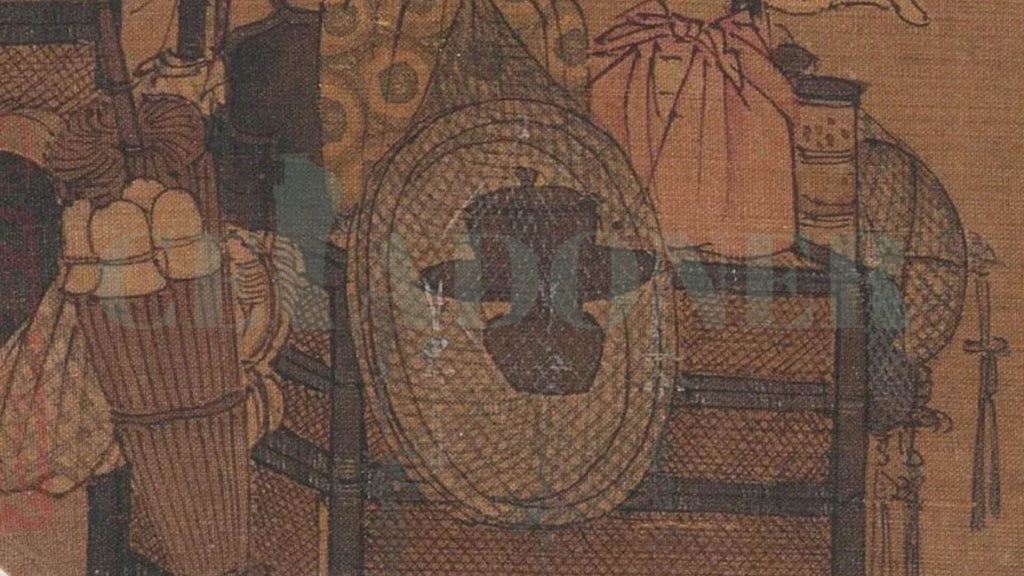
"Partial View of the 'Playful Skeletons' Painting"

"Partial View of the Fourteenth Movement of 'Eighteen Songs of a Nomad Flute'"
The tomb burial records are even more abundant, with numerous examples.
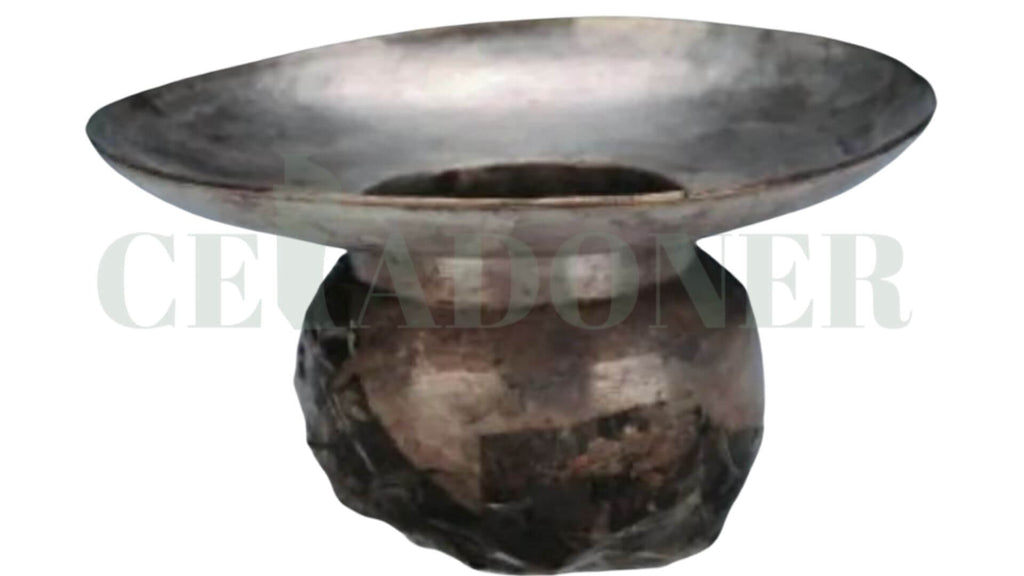
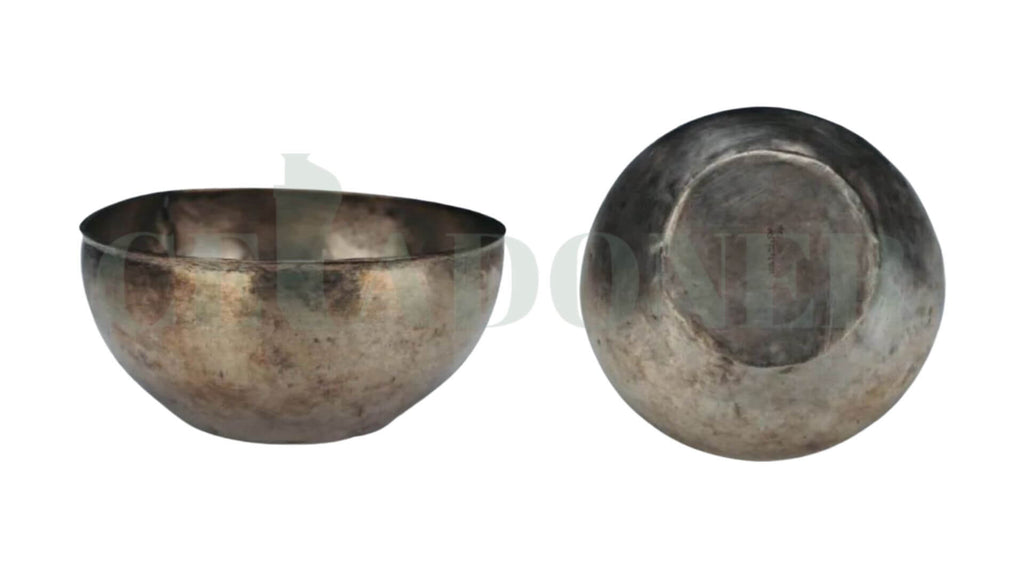
"Silver Spittoon and Silver Basin Unearthed from a Song Dynasty Tomb at Jiaoyishan, Dongyang, Zhejiang"
Both items bear the inscription 'Fan Erlang' on their bottoms, suggesting that they were likely crafted as a set. There are also fragments of a silver washbasin, possibly indicating a complementary 'silo drum'.
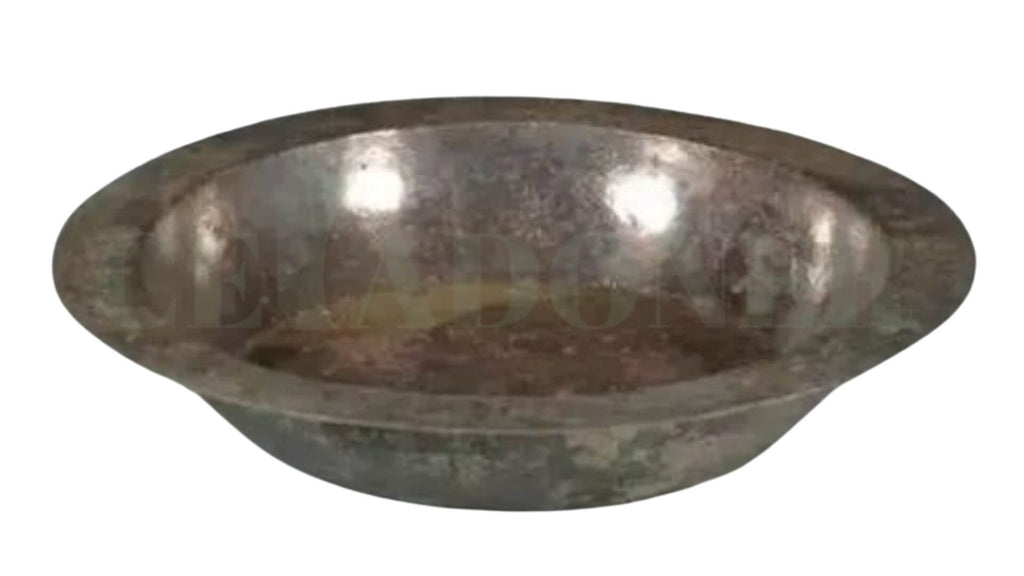

Set of Three Silver Silo Drums, Silver Spittoons, and Silver Basins Unearthed from a Southern Song Dynasty Tomb at Zhoutangqiao, Changzhou City, Dated to the Fifth Year of Jingding Era (1264)
"If we consider the washbasin (洗,盆) and spittoon individually, they are both long-standing items. Those made of metal are sturdy and resistant to damage, making them suitable for travel. In comparison, ceramic vessels are more readily available, common, and widely used, offering greater flexibility in their application.
The combined use of ceramic washbasins, spittoons, and basins has existed since the Five Dynasties period. For instance, artifacts unearthed from the Kangling tomb of the Wuyue Kingdom feature a set of three items: a Yue kiln celadon washbasin, spittoon, and basin. While ceramic objects are fragile and may not necessarily be used during travel, these three items are indispensable components of daily hygiene and grooming."
(Note: Please note that the translation provided is based on the information provided and may not be a verbatim translation of the original text.)
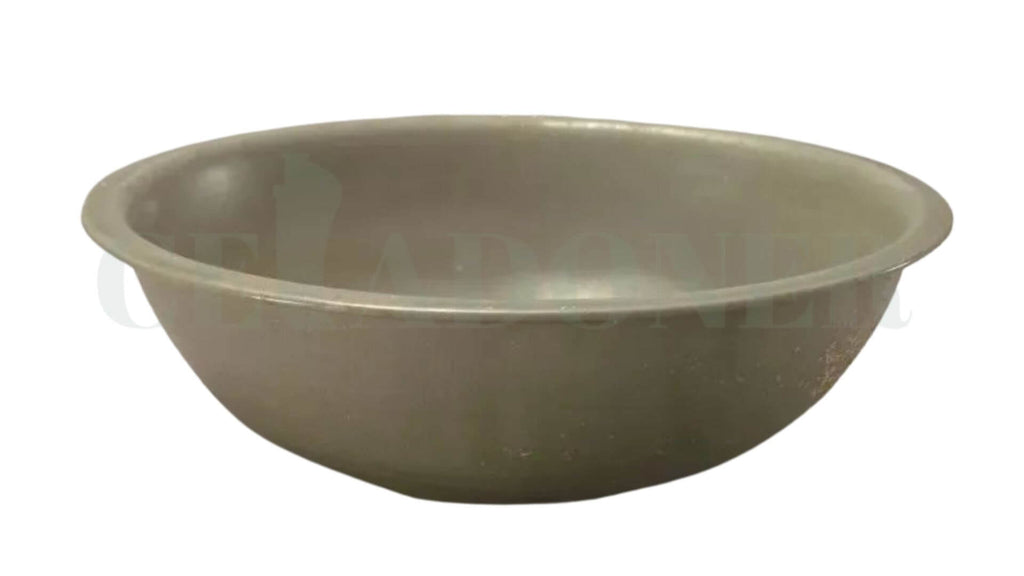
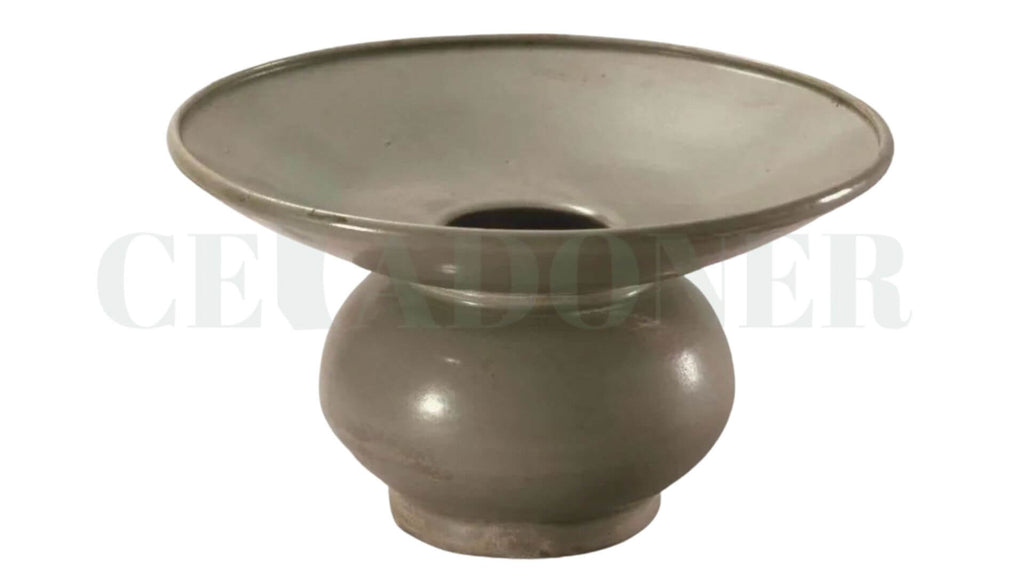
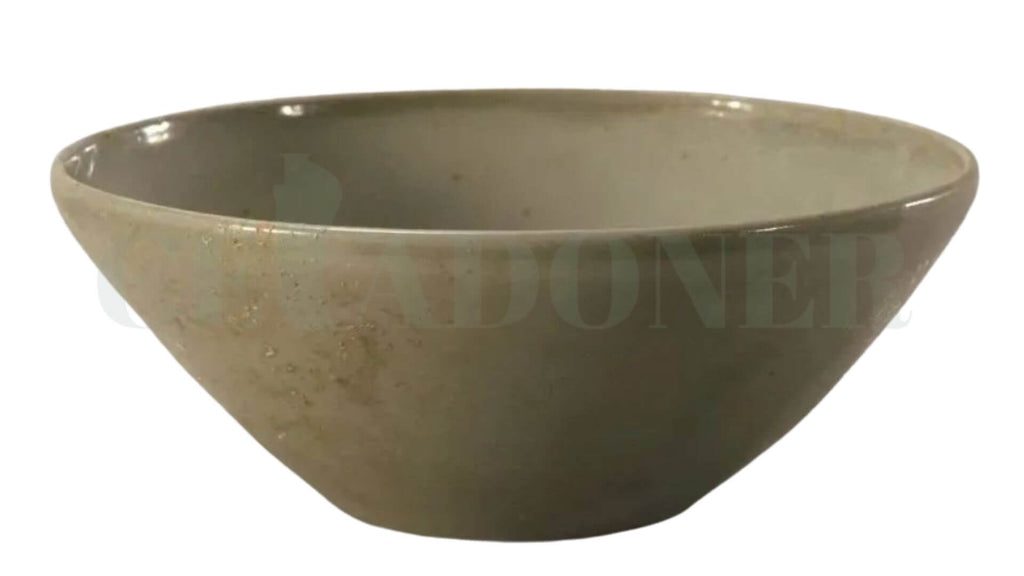
"Wuyue Kingdom Celadon Washbasin, Basin, and Spittoon Set from the Five Dynasties
Unearthed from the 'Kangling' Tomb of Queen Consort Ma, Qian Yuanchan, in the Twelfth Month of the Fourth Year of Tianfu Era (940) of the Later Jin Dynasty, Lin'an, Zhejiang Province
Currently held in the Lin'an District Museum, Hangzhou City"
"The use of ceramic spittoons was more widespread. The popularity of wide-mouthed spittoons in ceramic material was already evident during the Tang Dynasty. Whether for feasts or tea gatherings, these types of spittoons appeared to be essential sanitary utensils. This can be further corroborated by examining the wall paintings in Liao tombs in Xuanhua, Hebei Province, and the tomb of Princess Chen of the Liao Dynasty. These wall paintings depict scenes of attendants holding spittoons, which likely reflect aspects of the deceased's daily life."
(Note: This translation is based on the information provided and may not be a verbatim translation of the original text.)
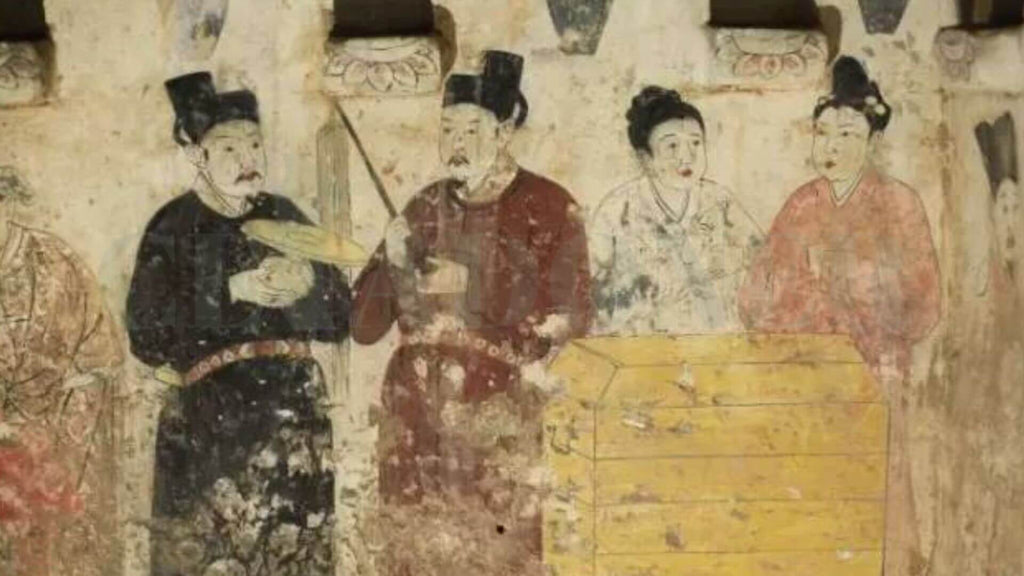

"Mural Depicting Tea Preparation in a Liao Dynasty Tomb in Xuanhua, Hebei Province"
"Furthermore, the stylistic features of ceramic spittoons from the Song Dynasty were likely influenced by metalware. Physical examples, such as the incised white porcelain spittoon from the Ding kiln of the Northern Song Dynasty held in the Beijing Palace Museum's collection, suggest this influence. The spittoons unearthed from the Lü Family tomb, as mentioned earlier, include not only copper ones but also incised celadon spittoons from the Yaozhou kiln. Additionally, there are incised covered bowls that match these spittoons."
(Note: This translation is based on the information provided and may not be a verbatim translation of the original text.)
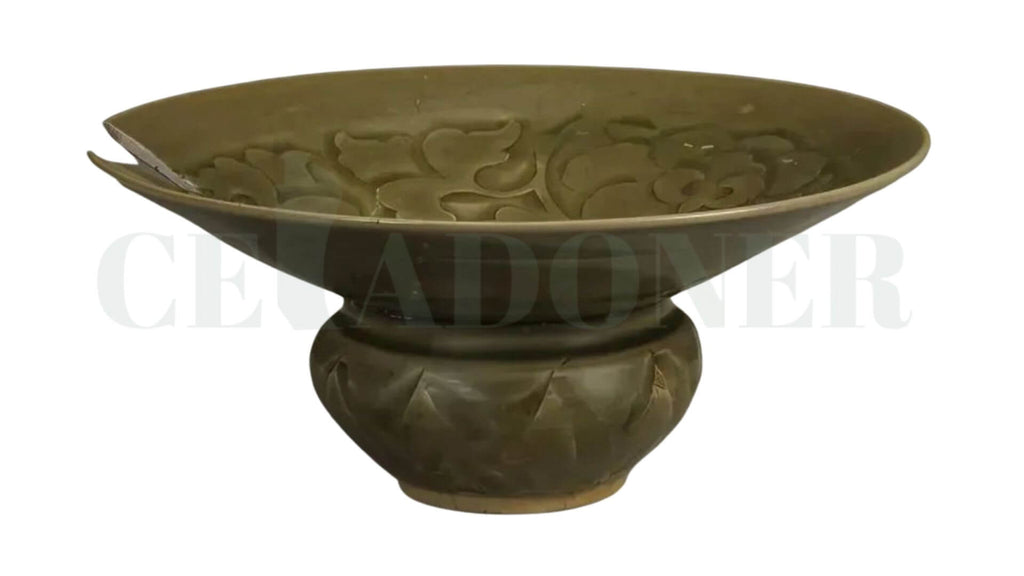

"Yaozhou Kiln Incised Floral Spittoon and Covered Basin Unearthed from the Lü Family Tomb"
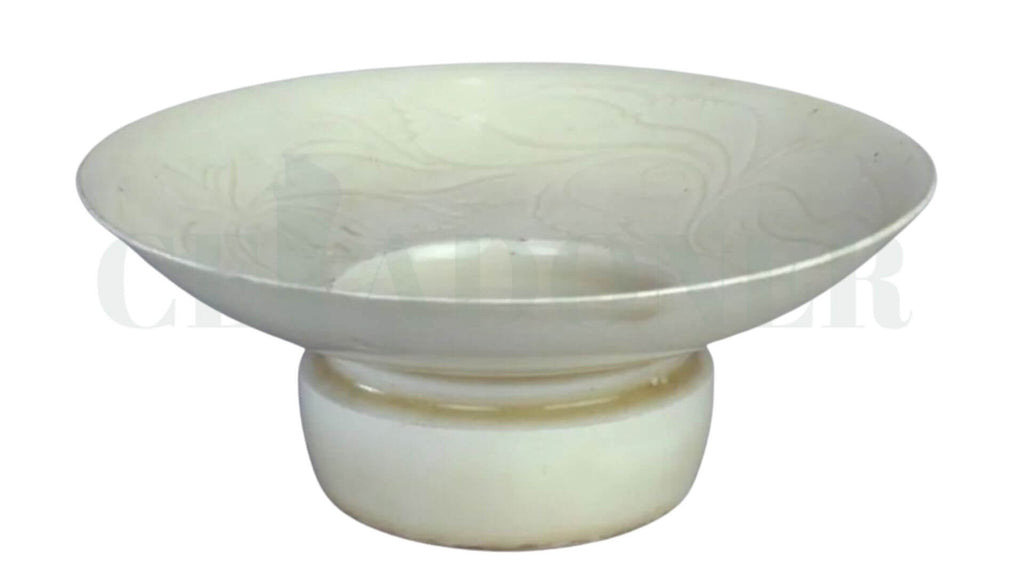
"Northern Song Dynasty Ding Kiln White Porcelain Incised Floral Spittoon" from the Collection of the Palace Museum, Beijing
 "Northern Song Dynasty Hutian Kiln Celadon Spittoon"
"Northern Song Dynasty Hutian Kiln Celadon Spittoon"
 "Song Dynasty Longquan Kiln Black-glazed Spittoon" from the Collection of Zhejiang Provincial Museum
"Song Dynasty Longquan Kiln Black-glazed Spittoon" from the Collection of Zhejiang Provincial Museum
"This style of wide-mouthed spittoon is extremely rare in the Longquan Kiln of the Song Dynasty. More commonly found in Longquan Kiln are slag buckets with a wide mouth and a large neck that seamlessly merges with the body, creating a slightly bulging and drooping belly, and a circular foot. It's worth noting some unique and rare shapes, as shown in the images below, which may represent transitional forms between spittoons and slag buckets. In terms of function, they might have still been primarily used to collect turbid water."
(Note: Since I can't view images, the description provided is based on your text. Please make sure to verify the accuracy of the description.)
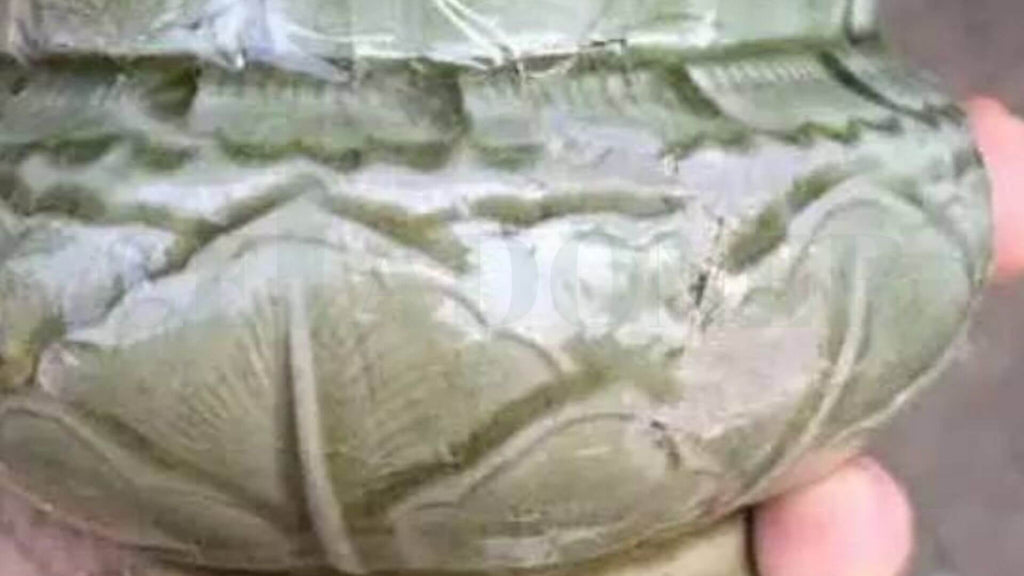
"Northern Song Dynasty Longquan Kiln Slag Bucket"
This artifact is a fragment, characterized by its disproportionately large mouth, incised decorations, banana leaf motifs on the belly, a tall and flared foot with green glaze partially turning yellow, and a pronounced glassy texture with delicate crackles. The style of its body and glaze decoration exhibits distinctive characteristics of its era.
 北宋/南宋 龙泉窑黄釉渣斗
北宋/南宋 龙泉窑黄釉渣斗
